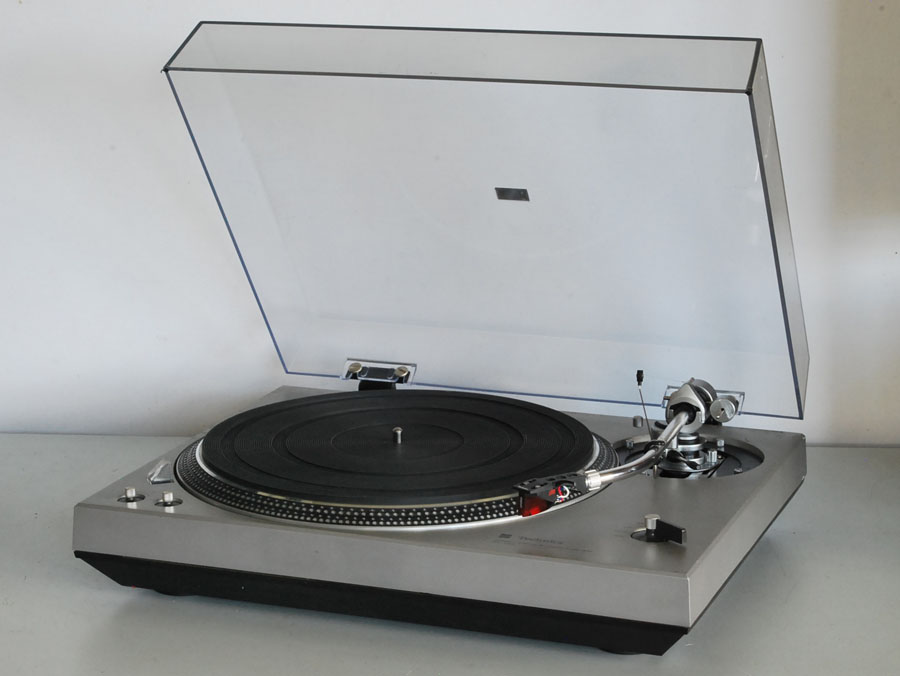The Technics SP-10 broadcast turntable introduced the technology in 1970, and it blew people’s minds. Without the use of idlers, pulleys, or belts, direct drive accomplished exactly what it stated on the tin: it moved the platter from its center. It had numerous advantages, including the ability to adjust the platter speed to an unusually high degree of accuracy and consistency over time. In principle, no other drive system could match it. Initially, the issue was one of expense. The SP-10 was not a consumer turntable, and it was replaced a year later by the SL-1100.
To make it a little less expensive, the SL-110 (arm-less version of the SL-1100) was released in 1972, and it was the start of Technics’ direct drive series. Later that year, the SL-1200 arrived, which was an instant popularity with radio stations, leaving the SP-10 to prestigious state broadcasters such as the BBC and Japan’s NHK.
Technics introduced the SL-150 and SL-1500 in 1975. (with integral tonearm, pictured). This was supposed to be the brand’s ‘cheap high-end design,’ similar to the BMW 5-series to the SP-10’s 7. It included the company’s exclusive direct drive technology in a small yet durable package, with a little lower torque motor than the SP-10. This was still more than adequate, as it produced a 0.03 percent WRMS wow and flutter figure, which was better than almost every other turntable on the market, including the much-heralded Linn Sondek LP12. Rumble was measured at -70dB, which was a very good value for the time.
A 2.5kg diecast aluminium alloy platter with a 330mm diameter was driven by an ultra low speed brushless DC motor with servo control, with the speed varying by 10% between 33.3 and 45RPM. It sat on the main bearing, which the DD motor revolved around. This was set into the silver-painted aluminium plinth, which measured 139x366x453mm and was relatively small. The deck as a whole weighted 7.8kg. This was given a good-quality plastic dustcover with friction supports to keep it in place. The arm board could be swapped out and came with a normal SME cutout. For this reason, most SL-150s were sold with the 3009 Series 2 first, then the SME Series III later.
Despite its not insignificant £150 price tag in 1975, the SL-150 did quite well in the United Kingdom. Because the market was becoming obsessed with British belt drive turntables, it didn’t get the attention it needed. However, through the large hi-fi retailers of the time, such as Laskys and Lion House, a large number of units were sold to very happy owners, and many of them went on to provide decades of dependable service.
The Technics is a very good turntable in terms of sound, but it isn’t exactly a top-tier turntable. It is quick, strong, clean, and exciting to listen to; it lacks a little smoothness and has a slightly limited sense of stage depth and scale in absolute terms, but it performed admirably in comparison to most decks of the time. When compared to many belt drives of the time, the bass is a revelation, being both strong and extremely tight. The inky black silences and low surface noise are additional indicators of its superior engineering.
The addition of quartz lock to the SL-150/II in 1977 boosted the deck’s sound even more, while it wasn’t technically essential given the mark I’s exceptional speed stability. Its even quieter powertrain was even more pleasant, with rumbling values that were vanishingly low. It also modified the aesthetic a little, with rosewood veneer details that aren’t to everyone’s liking. The British market had already committed to our own native belt drive designs, such as the Ariston RD80, STD 305, and Dunlop Systemdek, by this time.
Many SL-150s are still there today, like cockroaches after a nuclear war. Some are still functional, while many others have speed stability concerns due to faulty servo board components. They’re simple to repair, and with a few drops of the included oil to keep the bearing fresh, they should last for many more years. This ancient Technics may be found secondhand at a surprisingly low price for what it is – less than £300 if you’re lucky, but it may need service by now. For the price of a new entry-level Pro-Ject or Rega, it’s a lot of quality and engineering, and it’ll sound a lot better. Surprisingly, unlike some of its stablemates, the SL-150 has not achieved cult status. But it’s only a question of time…






